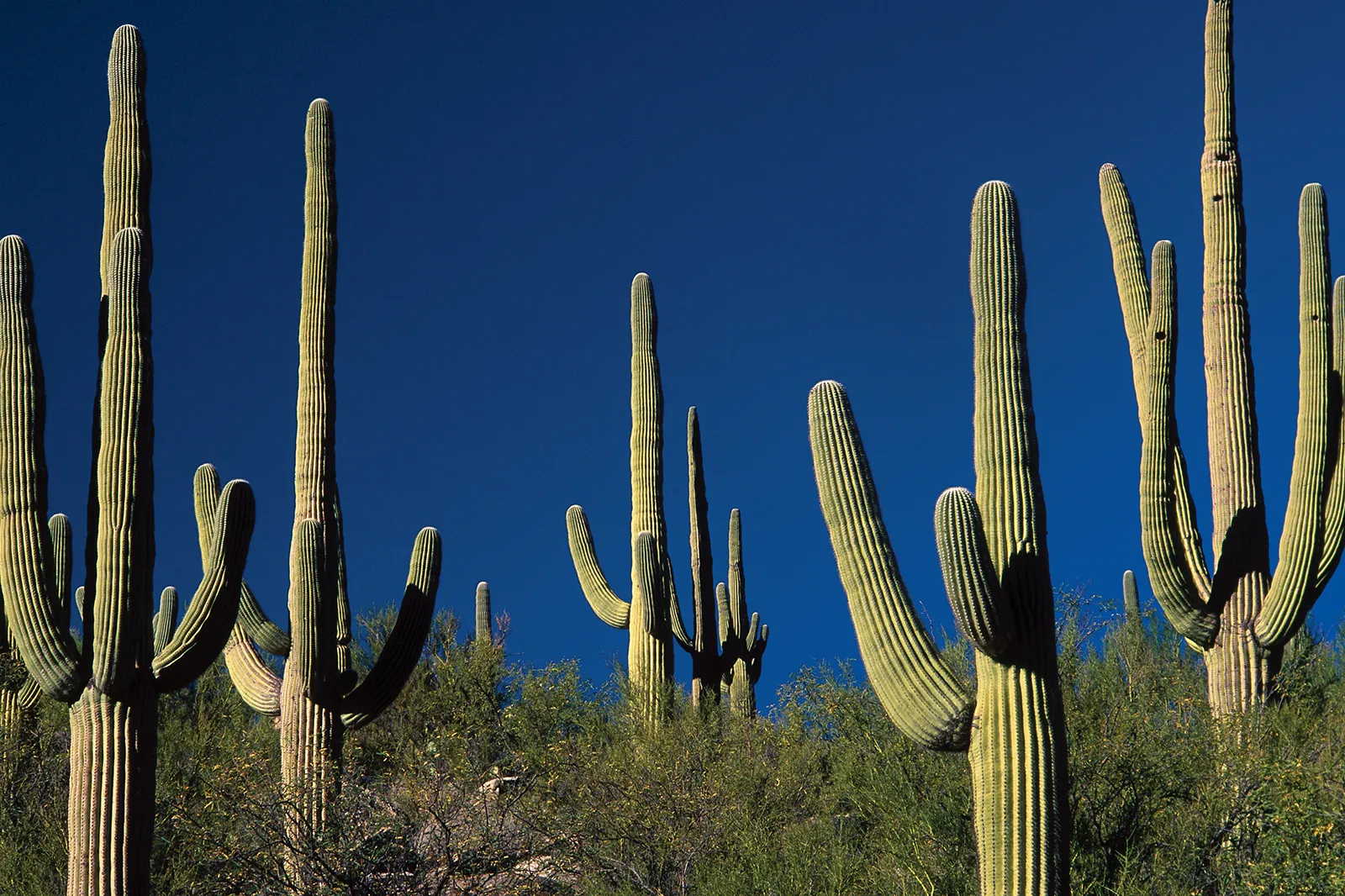
When you think of cacti, what comes to mind? Perhaps you envision prickly desert plants that can survive in the harshest conditions. But did you know that cacti are more than just spiky succulents? In fact, there are so many fascinating facts about cacti that will leave you amazed and wanting to learn more.
In this article, we will delve into the world of cacti and explore 19 mind-blowing facts that will change the way you look at these incredible plants. From their unique adaptations to their ecological importance, you’ll discover just how remarkable and diverse the cactus family truly is.
So, get ready to be fascinated as we take a journey through the fascinating world of cacti and uncover some truly eye-opening facts that will both surprise and amaze you!
Key Takeaways:
- Cacti are incredibly diverse and adaptable, with over 2,000 species thriving in various environments, from deserts to forests. Their ability to store water and provide shelter for wildlife is truly remarkable.
- Some cacti have surprising uses, from providing edible pads to inspiring art forms. Their unique features, such as spines instead of leaves and shallow root systems, make them fascinating and valuable plants in our world.
Cacti are found in diverse environments.
Cacti are incredibly adaptable plants that can be found in a wide range of environments, from deserts to forests and even coastal regions. Their ability to thrive in various conditions is truly remarkable.
There are over 2,000 species of cacti.
The world of cacti is incredibly diverse, with over 2,000 known species. Each species has its own unique characteristics and adaptations to survive in their respective habitats.
Cacti can store water to survive in drought conditions.
One of the most fascinating features of cacti is their ability to store water in their stems, roots, and leaves. These water reserves allow them to survive in arid and desert regions with minimal rainfall.
Some cacti can live for over 200 years.
Cacti are known for their longevity. In fact, some species can live for well over 200 years, making them some of the oldest living plants on Earth.
The saguaro cactus can reach heights of up to 70 feet.
The saguaro cactus, iconic to the deserts of North America, can grow to towering heights of up to 70 feet. Its impressive stature and unique branching patterns make it a symbol of the American Southwest.
Cacti have spines instead of leaves.
Unlike most other plants, cacti have evolved spines instead of leaves. These spines serve multiple purposes, including reducing water loss, protecting the plant from predators, and providing shade to the plant’s surface.
Cacti produce beautiful flowers.
Contrary to popular belief, cacti do produce flowers, and some species have incredibly vibrant and stunning blooms. These flowers often emerge in the spring or summer and attract pollinators such as bees and hummingbirds.
Some cacti have medicinal properties.
Certain species of cacti, such as the prickly pear cactus, have been used for centuries in traditional medicine. They are believed to have various health benefits, including reducing inflammation and promoting digestion.
Cacti have shallow root systems.
To efficiently absorb any rainfall, cacti have developed shallow root systems that spread wide instead of growing deep into the ground. This allows them to take in water quickly before it evaporates in the arid climates they inhabit.
Cacti can be cultivated as ornamental plants.
Due to their unique shapes and ability to thrive in indoor environments, many species of cacti are popular choices for ornamental plants. They add a touch of desert beauty to gardens, homes, and offices.
Some cacti can be used to make dye.
Certain species of cacti, such as the cochineal cactus, produce a vibrant red dye that has been used for centuries in various cultures. The dye is extracted from the insects that live on the cactus.
Cacti have a specialized mechanism to prevent water loss.
To minimize water loss through transpiration, cacti open their stomata, tiny pores on the surface of their stems, during the night when the temperatures are cooler and humidity is higher.
The tallest cactus on record was over 78 feet tall.
In 2001, a giant saguaro cactus set the record as the tallest cactus ever recorded. It stood at a staggering height of over 78 feet, surpassing all other known cacti in size.
Some cacti are epiphytic.
While most cacti grow in the ground, some species have evolved to become epiphytic. This means they can grow on other plants, such as trees, deriving nutrients and moisture from the air and rainfall.
Cacti have unique pollination strategies.
Many cacti have coevolved with specific pollinators, such as bats, moths, or birds. They often have vividly colored flowers and produce sweet-smelling nectar to attract their specific pollinator partners.
Cacti can provide shelter for wildlife.
The spiny structure of cacti creates a perfect hiding place for various desert creatures, including birds, reptiles, and small mammals. Some cactus species even provide nesting sites for birds.
The prickly pear cactus is edible.
The pads, or “nopales,” of the prickly pear cactus are not only visually appealing but also edible. They can be grilled, sautéed, or used in salads, providing a nutritious addition to meals.
Cacti have been used for sustainable building materials.
In some regions, cacti have been utilized as a sustainable alternative for construction materials. The fibrous inner core of certain species can be used as a building material, providing an eco-friendly option.
Cacti have inspired various art forms.
The unique shapes, colors, and resilience of cacti have inspired artists across the world. From paintings to sculptures, cacti serve as a muse for creative expression and are often associated with desert landscapes.
Conclusion
Cacti are truly fascinating plants that have captivated the attention of plant lovers and botanists alike. With their unique features, incredible adaptations, and diverse species, cacti continue to amaze us with their resilience and beauty.
From their ability to store water in their thick, fleshy stems to their striking blooms that emerge in the most arid of environments, cacti have proven themselves to be true survivors in the harshest conditions. Whether you’re a gardening enthusiast, a nature lover, or simply curious about the wonders of the plant world, exploring the world of cacti will undoubtedly leave you in awe.
So, the next time you encounter a cactus, take a moment to appreciate its beauty and the remarkable adaptations that allow it to thrive. And remember, these 19 mind-blowing facts about cacti are just scratching the surface of what makes these plants so intriguing.
FAQs
1. How do cacti survive in desert environments?
Cacti have evolved various adaptations to survive in desert environments. Their thick, waxy skin helps to retain moisture, while their spines provide shade and reduce water loss through transpiration.
2. Do all cacti have flowers?
No, not all cacti produce flowers. Some species only produce foliage, while others may have inconspicuous or rare blooms. However, many cacti species are known for their beautiful and vibrant flowers.
3. Can I grow cacti indoors?
Yes, many cacti can be grown indoors. They prefer bright, indirect sunlight and well-draining soil. However, it’s important to research the specific needs of each species to ensure their proper care.
4. How long do cacti live?
The lifespan of cacti varies depending on the species and growing conditions. Some cacti can live for several decades or even centuries in their natural habitat with proper care and maintenance.
5. Are all cacti prickly?
While most cacti have spines, there are some species that have a smooth surface or only minimal spines. The presence and density of spines can vary greatly among different cactus species.
If you're captivated by the incredible world of cacti, there's even more to explore! Uncover the astonishing facts about orchid cactus, a unique and beautiful species. Quench your thirst for knowledge with the intriguing details about cactus cooler, a refreshing beverage. Satisfy your curiosity and nourish your mind by delving into the nutritional facts of cactus tortillas, a delicious and healthy alternative.
Was this page helpful?
Our commitment to delivering trustworthy and engaging content is at the heart of what we do. Each fact on our site is contributed by real users like you, bringing a wealth of diverse insights and information. To ensure the highest standards of accuracy and reliability, our dedicated editors meticulously review each submission. This process guarantees that the facts we share are not only fascinating but also credible. Trust in our commitment to quality and authenticity as you explore and learn with us.


